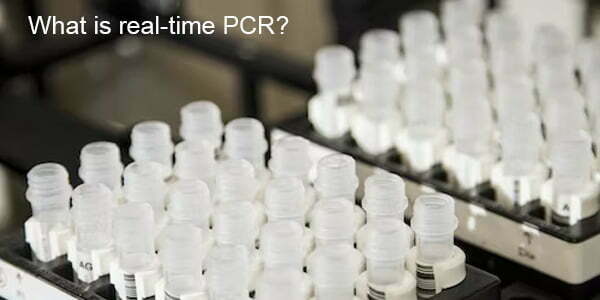Quantitative PCR (qPCR), also called real-time PCR or quantitative real-time PCR, is a PCR-based technique that couples amplification of a target DNA sequence with quantification of the concentration of that DNA species in the reaction. This method enables calculation of the starting template concentration and is therefore a frequently used analytical tool in evaluating DNA copy number, viral load, SNP detection, and allelic discrimination. When preceded by reverse-transcription PCR, qPCR is a powerful tool to measure mRNA expression and is the gold standard for microarray gene expression data confirmation. Given the broad applications of qPCR and the many technical variations that have been developed, a brief survey of qPCR, including technical background, available chemistries, and data analysis techniques will provide a framework for both experimental design and evaluation.
Real-time detection of PCR products is enabled by the inclusion of a fluorescent reporter molecule in each reaction well that yields increased fluorescence with an increasing amount of product DNA. Due to the development of such fluorescent reporter molecules and the advances of qPCR instruments, this technology has become more and more popular. Ever since 2020, after the COVID-19 pandemic, the cost of the reagents and the instrument have decreased a lot, which further extends the application of this technology in companion animal diagnostics.
In a typical qPCR testing, 3 major steps are included:
(1)Sample preparation ( nucleic acid extraction)
Test samples (such as nasal, mouth, throat swabs or serum, plasma, blood, or feces, saliva, etc) are prepared, and the nucleic acid is extracted with a commercial extraction kit or following certain protocols. Take the Canine Distemper Virus real-time PCR kit as an example, test samples are collected and prepared into a tube, then used for the PCR analysis.
(2) PCR reaction
Sample extract, PCR reaction mix, enzyme mix, etc are added into the plastic tube then put into the PCR instrument for amplification. The whole process would take 20min to 30min, etc based on the cycles and programs
(3) Data collection and interpretation
The PCR instrument will collect the signal of the reaction and plot a curve with cycles and fluorescence as the x-axis and y-axis, by comparing the Ct value obtained from the curve with the cut-off value set in the kit instruction, the test result of the sample can be confirmed.
Further information
- Laboratory Methods in Enzymology: DNA,Jessica S. Dymond, in Methods in Enzymology, 2013
- What is real-time PCR (qPCR)? Bio-rad laboratories

